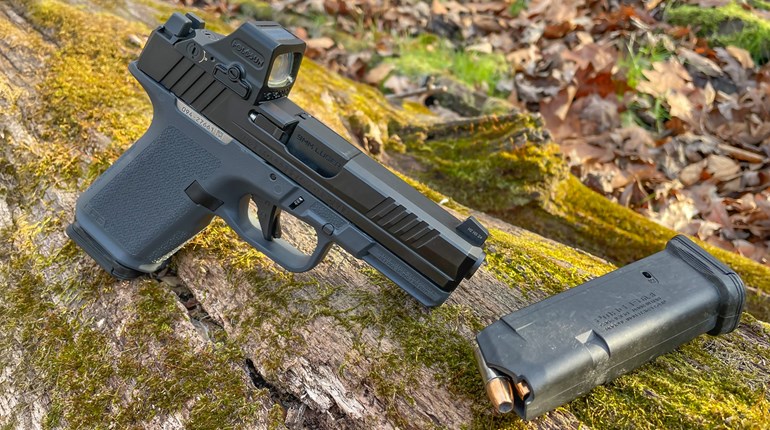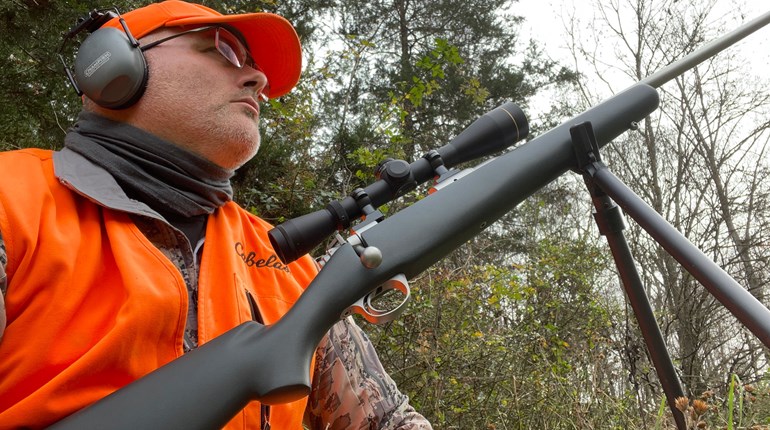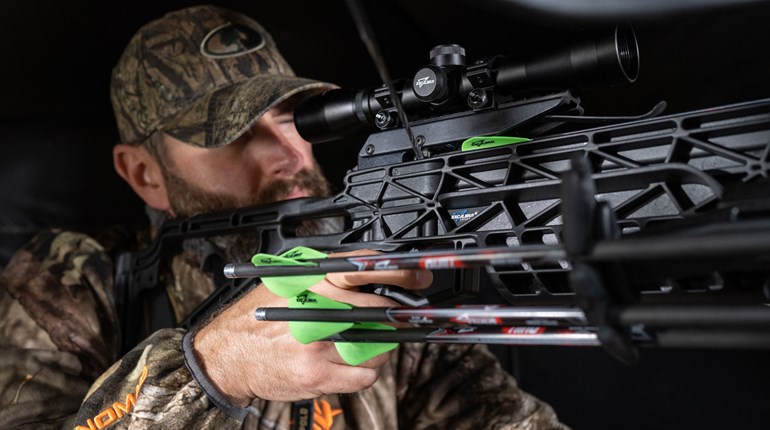
After the introduction of its Icon rifle in 2007, Thompson/Center Arms realized that to capture the attention of a larger market segment, a mid-price-point bolt-action rifle was needed. As such, the company took lessons learned from the Icon manufacturing project and many of the rifle’s key features and applied them to the lower-cost Venture, which was unveiled in 2009. The result is a rifle that is among the best deals available, as it compromises a few traits of its predecessor, yet boasts a more attractive price.
The foundation of the Icon—its receiver—is machined from solid bar stock. Its integral recoil lug and integral Weaver-style scope bases, as well as its engraving all added to its price. When combined with the rifle’s Ultra Wood stock, another premium feature, the suggested retail price reached $1,010.
“Changing to a round action, which is found on most popular bolt-action rifles, as well as using a polymer stock, represented the greatest savings on the Venture,” says Mark Laney, T/C’s director of research and development.
To ensure maximum rigidity for optimal accuracy, the company removed only enough metal from the receiver, particularly at the ejection port, to provide reliable functioning. Additionally, in switching to the round action, the company eliminated the Interlok Bedding System of the Icon, yet another cost-saving measure, but doing so re-quired the Venture’s receiver fit the composite stock as tightly as possible. To accomplish this, the company added small-diameter pillars that create a positive stop when the receiver is torqued into the stock, and they ensure the receiver maintains its position during firing. The recoil lug is a separate piece that is sandwiched between the barrel and the receiver. This configuration, observed on most popular rifles, reduces cost, but sacrifices little in strength.
The Venture’s bolt-release button, like its brethren, is on the left rear side of the receiver, and the two-position safety, as opposed to the Bolt-Lok-equipped variant on the Icon, is on the right rear side. In the forward position a red dot is revealed, indicating “fire.” Even in the rear, or safe, position the bolt can be operated for loading and unloading.
As for the Venture’s hefty push-feed bolt, the company maintained the primary features of the Icon’s bolt, including: full-diameter body, three recoil lugs, sliding plate extractor and plunger-type ejector, which projects from the recessed bolt face. The three-lug design results in a 60-degree bolt lift, which not only quickens operation but also aids scope clearance. “The three points of contact on the bolt’s lugs are critical in keeping the bolt face perpendicular to the bore,” adds Laney. The root of the bolt handle effectively serves as a fourth lockup point.
In fact, the key difference between the Venture’s bolt and that of the Icon resides in a relief cut to accommodate the Venture’s round action. The Venture’s bolt handle sweeps rearward, and the knob is smooth. To reduce friction for smoother travel, the bolt is nitride-coated. “We added the nitride coating for its wear properties,” explains Laney. “With nitride, bolt movement gets smoother with time and it doesn’t wear off.”
Like the Icon, the Venture’s blued barrel features 5R rifling. According to Laney, after the company’s research and development team tested many rifling types in the development of the Icon, 5R—in which the lands oppose the grooves, versus the lands opposing lands—made for better bullet transition out of the grooves and resulted in less jacket deformation. “We found a significantly lower incident of copper fouling through a series of shots,” reports Laney.
The Venture’s barrel ends in a recessed, target-style crown. As the barrel is devoid of iron sights, the receiver is drilled and tapped, and the company factory-installs Weaver-style scope bases—a nice touch.
Feeding the Venture, like its brethren, is a polymer, single-stack magazine. Why polymer? Polymer provides two performance benefits that surpass metal: It weighs less and is more forgiving. It’s also less expensive. The company tested the design by driving over the polymer prototypes with vehicles, and although they deformed, they were returned to shape by hand. The same couldn’t be said of metal magazines. Unlike the Icon’s, the Venture’s magazine latch is built into the magazine, not part of the bottom metal unit. This reduces cost in the stock. The Venture’s stock houses the magazine well and latch surfaces. This is done in the mold with no extra parts.
As for the trigger, both the Icon and Venture have single-stage versions that are user-adjustable from 3 to 5 pounds. The test rifle’s trigger broke crisply at 3 pounds, 3 ounces, with little over-travel. This is slightly less than the lowest listed setting. With a well-designed trigger guard, which is integral to the stock, the trigger is quick to access even while wearing gloves.
The Venture’s black polymer stock has raised textured panels in the pistol grip and fore-end areas to enhance purchase. Both the fore-end and buttstock have sling swivel studs, and the buttstock is capped with a soft, .72-inch-thick rubber recoil pad.
Accompanying the Venture are a lifetime warranty and the company’s MOA Accuracy Guarantee. These cover all components, and items are repaired at no cost to the customer. (This doesn’t include neglect.)
To ensure its accuracy guarantee, T/C randomly selects a percentage of rifles off the production line and shoots groups with them. Each rifle must produce a three-shot group of 1 MOA or less at 100 yards. Even so, if a customer is unhappy with the performance of the Venture, he can return it to T/C where personnel will shoot it to verify the rifle’s performance, and fix if neccessary, free of charge.
Returning my test rifle certainly wasn’t required, as during accuracy testing it grouped nicely through three and even four shots. Instead of three-shot groups, though, the Venture was evaluated through more stringent testing—five consecutive, five-shot groups at 100 yards. The standout load, Winchester‘s 150-grain Power Max, averaged 1.24 inches for 25 rounds, and the average across the board measured 1.79 inches. There were no failures to feed, fire, extract or eject.
Although it’s nice to punch paper from the bench, being a hunting rifle, the Venture needed to be tested in the field. That was exactly what happened last December, when I, along with several other hunters, used Ventures chambered in .270 Win. and .308 Win. on a hunt outside Uvalde, Texas, with Southern Outdoor Experience (www.soehunts.com). My Venture in .270 Win. was topped with a 3X-9X-40mm T/C Hawken Hunter scope and loaded with 130-grain Winchester Power Max Bonded ammunition. This combination accounted for an extremely old doe, and the other rifles in camp removed multiple does and several bucks from the burgeoning herd. The rifle was a joy to carry, and when called upon, delivered an accurate and lethal strike.
With a suggested retail price of $504, the American-made T/C Venture is easily among the best buys in the marketplace. In fact, for the price, it’s difficult to find a rifle with a comparable list of features, not to mention the thoughtfulness of design and the attention to detail. When you consider, too, that it’s offered in a host of cartridges ranging from .204 Ruger to .300 Win. Mag., the rifle will fulfill the needs of the majority of hunters while keeping more of their hard-earned money in their possession.





































